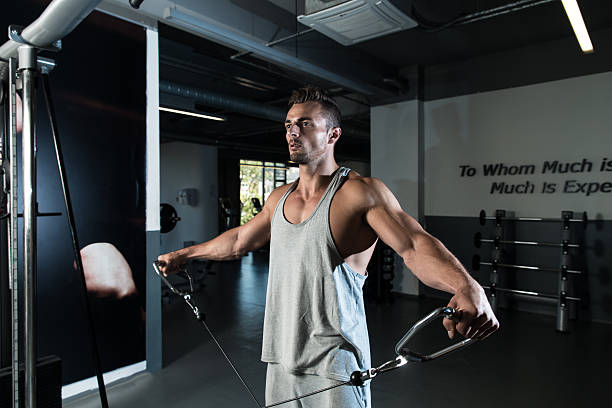16 Best Cable Shoulder Exercises To Build Muscle & Shape Delts
Best Cable Shoulder Exercises To Build Muscle & Shape Delts
Looking to take your shoulder workout to the next level? The cable machine reigns supreme when it comes to versatility for training the shoulders. Not only can you easily change up the load and angle of exercises, but you can also seamlessly transition between grips and attachments to hit your muscles from all angles.
While heavy compound lifts using barbells are key for increasing absolute strength, the cable machine is ideal for building muscle due to its smooth range of motion and constant tension. This enables more time under tension and muscle damage.
In this guide, you'll discover the 16 most effective cable shoulder exercises to add size and definition across the delts - including seldom-used moves to target commonly weak areas. Plus at the end, an awesome cable-only shoulder workout!
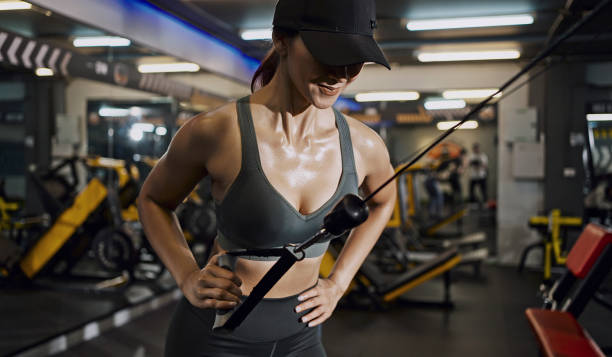
What Are The Benefits Of Cable Shoulder Exercises?
Before jumping into the moves, let's look at why cable shoulder exercises should be a staple in your training:
- Versatile - Easily change load, angles, grips, attachments, body position
- Unilateral - Identifies muscle imbalances side-to-side
- Smooth Motion - Optimizes time under tension
- Safe & Efficient - Reduces joint strain
- Great For Isolation - Perfect for targeting lagging heads
- Beginner Friendly - Easier to learn proper form
These benefits make the cable machine a superb choice for sculpting round, full muscle bellies across the anterior, lateral and posterior deltoids.
Now let's get to the exercises!
Best Cable Shoulder Exercises
Here are the top cable shoulder exercises to incorporate into your workouts:
1. Cable Shoulder Press
Target: Front & side delts, triceps, upper traps
This exercise targets the front delts more directly than a traditional barbell military press, making it one of the best for full shoulder development.
Tip: Adjust your stance to change the angle - standing further back hits the front delts more.
2. Single-Arm Cable Shoulder Press
Target: Front & side delts, triceps, core
Focusing on one arm at a time allows you to isolate each shoulder without compensation from the other side. Great for identifying and correcting muscle imbalances.
Tip: Brace your core and glutes to prevent rotating or leaning sideways.
3. Cable Lateral Raise
Target: Side & rear delts
The classic lateral raise isolates the oft-neglected side delts. Use a light weight and focus on contracting the delts fully with each rep.
Tip: Lean slightly away from the machine to increase the range of motion.
4. Single-Arm Bent Over Lateral Raise
Target: Rear & side delts
Bending forward takes the front delts out of the movement, allowing you to hammer the rear delts directly. Perform unilaterally to correct muscle imbalances.
Tip: Keep your elbow slightly bent and lift your arm straight out to the side.
5. Reverse Cable Flye
Target: Rear delts, rhomboids, traps
The reverse flye is one of the best ways to build thickness in the often-underdeveloped rear delts. Can be done unilaterally or with both arms.
Tip: Lead with the elbows, pulling arms straight out to the sides without arching lower back.
6. Cable Face Pull
Target: Rear delts, rotator cuff
Face pulls strengthen the rotator cuff muscles, improving shoulder joint health. Pull elbows high and pinch shoulder blades together.
Tip: Don't let elbows drift above shoulder height.
7. Cable Upright Row
Target: Front & side delts, upper traps
Upright rows target the front and side heads strongly while also building upper trap size and strength. Use lighter weight and strict form if shoulders are cranky.
Tip: Initiate the pull by driving elbows up, not hands.
8. Single-Arm Front Raise
Target: Front & side delts
Raising one arm at a time allows you to better isolate the front delts while eliminating compensation from the other shoulder.
Tip: Lean body slightly away from working arm to increase range of motion.
9. Cable Front Raise
Target: Front & side delts, serratus anterior
The front raise directly targets the front delts. Can be done unilaterally or bilateral. Control the descent to keep tension on the muscles.
Tip: Use a rope handle or bar rather than a single handle for more comfort.
10. Lying Cable Rear Delt Flye
Target: Rear delts
Lying face down on an incline bench isolates the rear delts during this flye variation.
Tip: Pull cables straight out to the sides, not behind your head.
11. Cable External Rotation
Target: Rotator cuff
Great for strengthening the rotator cuff to improve shoulder stability and prevent injury. Can be done unilaterally.
Tip: Keep your upper arm fixed to your side throughout motion.
12. Cable Y-Raise
Target: Front, side & rear delts
The Y-raise hits all three delt heads in one fluid motion. Lead with the thumbs, pulling shoulder blades together at the top.
Tip: Don't lean or swing to lift weight - stay tall and strictly use delts.
13. Cable Scarecrow
Target: Rear, side & front delts
Another exercise incorporating shoulder flexion, adduction and extension to work all delts. Squeeze at the top.
Tip: Focus on using only your shoulder to lift the weight, not your traps or arms.
14. Single-Arm Cable Rear Delt Row
Target: Rear & side delts, upper back
The single-arm row puts extra emphasis on the rear delts. Brace core and glutes to prevent torso rotation.
Tip: Lead with the elbow, pulling it above shoulder height.
15. Cable Shrug
Target: Upper & mid traps
While not technically a shoulder exercise, well-built traps give the illusion of broader, more impressive delts.
Tip: At the top, focus on squeezing traps rather than just lifting the weight.
16. Cable Overhead Triceps Extension
Target: Triceps, front delts
Strong triceps help lock out pressing moves for more front delt activation. Can be done unilaterally or bilateral.
Tip: Keep upper arms fixed overhead throughout motion.
Cable Shoulder Exercise Workout Routine
Here's a full cable machine shoulder workout incorporating the best exercises from above. Do this workout 1-2 times per week to pack size onto all heads of the delts and the upper back:
Warmup: Arm Circles, Shoulder Dislocates - 2-3 sets each
1A) Single-Arm Cable Shoulder Press - 3 sets x 12, 10, 8 reps
1B) Reverse Cable Flye - 3 sets x 10, 8, 6 reps
2A) Cable Lateral Raise - 3 sets x 15, 12, 10 reps
2B) Cable Face Pull - 3 sets x 15, 12, 10 reps
3A) Single-Arm Cable Bent Over Lateral Raise - 3 sets x 12, 10, 10 reps
3B) Cable Overhead Triceps Extension - 3 sets x 12, 12, 10 reps
- Cable Shrugs - 3 sets x 15 reps
The combination of multi-joint pressing moves, isolation exercises and upper trap work makes for a well-rounded routine to pack size on all heads of the delts in an efficient workout.
Consider combining it with the [SFS Hypertrophy Program](https://www.strongerbyscience.com/program
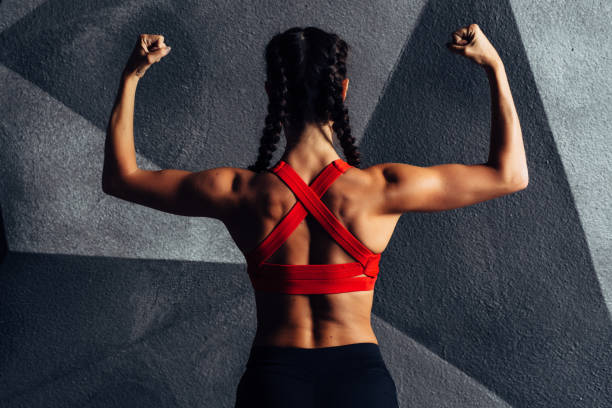
Shoulder Muscle Anatomy
To better understand how to train the delts for maximum growth using cables, let’s break down the anatomy and function of the shoulder muscles.
The shoulder joint consists of three main deltoid muscles:
Anterior Deltoid
The front delt makes up the rounded muscle shaping the front of the shoulders. It runs from the collarbone and shoulder blade across the shoulder joint, inserting close to the biceps.
Functions: Shoulder flexion, internal rotation, adduction
The front delt is involved in lifting the arms overhead and in front of the body. It also aids in horizontal pressing and pulling moves.
Lateral Deltoid
The side delt sits on the side of the shoulder. It originates on the shoulder blade and inserts close to the upper arm bone.
Functions: Shoulder abduction, flexion
The lateral delt lifts the arms out to the sides away from the body. It assists the front and rear delts in overhead presses and pulls.
Posterior Deltoid
The rear delt lies on the back of the shoulder. It runs from the rear of the shoulder blade to the rear of the arm bone.
Functions: Shoulder extension, external rotation, abduction
Key for pulling the shoulder blades back, as in rows. It also pulls the arms backward, as when doing reverse flyes.

4 Key Tips For Building Bigger Delts
Here are some key training principles to keep in mind for sculpting impressive shoulders with cables:
1. Train All Heads
It’s easy to neglect parts of the delts, especially the rear and side heads which aren’t hit as hard in pressing moves. Make sure to directly target all heads with isolation exercises like lateral raises.
2. Use Full Range Of Motion
Cables allow you to move fluidly through a complete range of motion with constant tension. Take advantage by controlling the eccentric and stretching the delts fully on each rep.
3. Go Heavy AND Light
Use heavy loads in multi-joint presses like shoulder presses to build foundational strength. But also incorporate higher rep isolation moves like lateral raises to maximize muscle damage.
4. Push To Failure
Cables are safer for training to failure than free weights. On your last set of isolation moves like front raises, keep cranking out reps until you physically cannot complete another with good form. This elicits a huge growth stimulus.
Now that you understand how to train the shoulders, let’s get specific with how to program cable moves into your workout split.
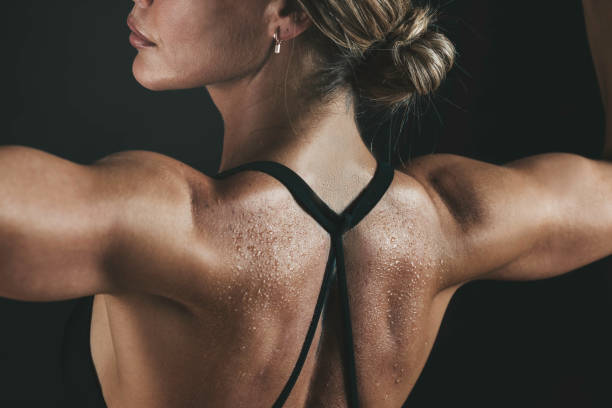
Shoulder Workout Schedule
You have two main options for organizing cable shoulder exercises into your routine:
1. Dedicate A Full Shoulder Day
The most direct approach is to devote one training day per week solely to blasting the delts. This allows you to hammer shoulders while fresh without fatiguing them as a secondary muscle group.
On your shoulder day, start with multi-joint pressing moves like shoulder presses to build foundational strength. Then shift to higher volume isolation exercises for the remainder of your workout.
Be sure to incorporate both unilateral and bilateral moves to identify any muscle imbalances.
This is an effective option if you’re training 4-6 days a week and have room to designate a full day to delts. Otherwise...
2. Pair With Chest Or Back
Another strategy is to combine shoulders with either chest or back in the same workout. Why these combos?
Shoulders And Chest: All three work upper body pushing muscles in unison during presses and flyes. Scheduling shoulders & chest together takes advantage of this synergy while fatiguing similar muscle groups.
Shoulders And Back: Upper back muscles like traps and rhomboids are heavily involved in shoulder stability and movement. Exercises like face pulls integrate shoulders and back. Plus there’s less overlap fatigue-wise compared to two pushing or pulling days back-to-back.
Whichever option you choose, make sure to adequately recover before training shoulders again. Depending on volume/intensity, most lifters need 72+ hours rest between shoulder sessions.
And no matter what, prioritize those isolation cable moves!
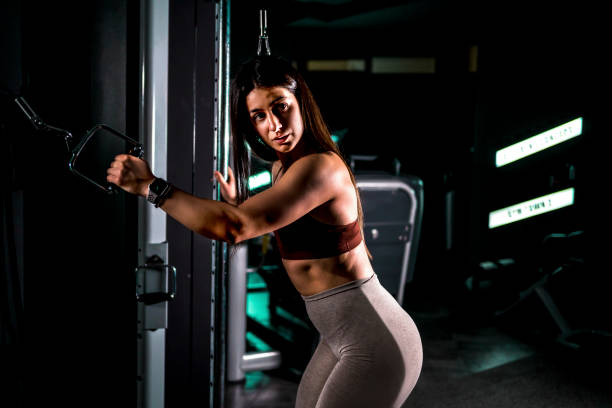
Best Grip & Hand Position For Shoulder Exercises
Another key benefit of cables is the ability to easily swap between various handles and grips to alter emphasis:
Straight Bar: Great for bilateral moves like front raises, engages more core stability to control rotation. Easier on the wrists than single handles.
Rope Handle: Allows for internal/external rotation. Good for moves like lateral raises. Wrist-friendly.
Single Handle: Better isolation since only one side supports the load. But can irritate wrists/elbows.
Neutral Grip: Palms facing each other, puts wrists in neutral alignment. Ideal for shoulder presses to take strain off wrists.
Overhand Grip: Palms down/facing behind you. Common for flies and raises to hit delts directly.
Underhand Grip: Palms up/facing front. Reduces involvement of surrounding musculature for isolation.
Regarding hand placement, research shows that for lateral raises, a thumb-up grip activates the delts just as well as pinky-up while being easier on the shoulders due to reduced internal rotation.
So in general, for isolation moves, we recommend avoiding an overly internally rotated hand position to take pressure off the joint. Focus more on lifting from the shoulders themselves rather than turning the hands.

Common Shoulder Injuries & Corrective Exercises
Due to athletic overuse and poor posture from daily life hunching over computers and phones, shoulder pain is very prevalent. Here are some of the most frequent shoulder issues and how cables can help:
Rotator Cuff Injuries
The rotator cuff is comprised of four small shoulder muscles that stabilize the shoulder. When they become damaged, it leads to degeneration and mobility issues.
Cable external rotations are a great rotator cuff rehab exercise, strengthening these muscles in an isolated manner.
Impingement
This painful condition is characterized by pinching and inflammation of the shoulder tendons, usually from repetitive overhead pressing. Specialized physical therapy is vital for recovery.
Face pulls and rear delt flyes strengthen the rotator cuff and upper back to relieve impingement. Light lateral raises kept in a pain-free range also assist.
Labrum Tears
The labrum cartilage ring deep in the shoulder socket is crucial for stability. When torn, daily activities become difficult. As with impingement, usually requires surgical repair.
Face pulls and external rotations are useful movements for labrum rehab to improve coordination.
Tendonitis
Repetitive overhead motions lead to inflammation of the rotator cuff tendons. Cables allow lighter loads with perfect form to rebuild strength and control without exacerbating pain.
As you can see, specific cable shoulder exercises can aid in recovering from and preventing many shoulder problems. Work closely with a sports physiotherapist when dealing with injuries rather than blindly pushing through pain.
Now let’s quickly recap some key takeaways on how to use cables for big strong shoulders:
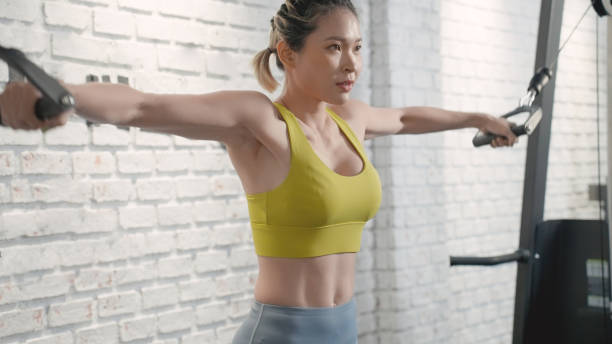
Best Cable Machines For Building Delts
While many gyms come equipped with comprehensive cable crossover rigs, not all cable machines are created equal when it comes to suiting shoulder training.
Here are top qualities to look for in a shoulder-friendly cable station:
Adjustable Pulleys: Multiple pulleys you can raise, lower, pull closer or apart enable hitting delts from more angles.
200lb+ Stack: Heavier weight capacity accommodates shoulder pressing strength levels while providing tension for isolation moves.
Unilateral Cables: Single cables for one-arm moves help prevent compensate from stronger side.
Accessories: Swappable attachments like handles, ropes, and straps allow easily changing emphasis.
Anchored: Stable base prevents tipping when pressing heavy or moving aggressively.
High-end cable crossover machines meet these requirements for optimal shoulder training. But they also take up a lot of space and budget.
Luckily, more compact cable systems like those from Force USA also offer versatile shoulder-building capabilities if you're setting up a home or garage gym.
We did an in-depth feature comparing top cable machine brands for shoulder exercises and other muscle groups in our Best Home Cable Machines guide. Check it out for specific product recommendations!

Shoulder Exercise Alternatives Using Bands & Dumbbells
While cable machines offer distinct benefits, adding variety outside of cables is key. Dumbbells and resistance bands nicely complement cables in shoulder programming:
Dumbbells: Enable more free range of motion. Great for overhead presses and raises for full shoulder stimulation. Challenges stability more.
Resistance Bands: Provide increasing tension curve as you stretch the band through pressing/pulling moves. Very joint-friendly.
And you can mimic motions of cable crossover machines by anchoring bands to racks, pillars, or partners for unique stimuli!
For optimal shoulder development, rotate through all three modalities each microcycle or mesocycle by:
- Starting with heaviest compound cable presses
- Moving to higher rep dumbbell isolation raises
- Finishing by burning out with ultra high rep band rotations/pull-aparts.
This nets you strength AND muscle building plus joint health all in one integrated program.

Conclusion: Cable Up For Boulder Shoulders!
If your shoulder workouts have grown stale and delts plateaued from solely using dumbbells or barbells, adding cable machine exercises provides a perfect jolt for igniting new growth.
Cables enable safely pushing deep into fatigue thanks to smooth resistance while altering angles/grip/body position for variation.
Be sure to incorporate moves that target all heads of the delts - front, side AND rear. Common mistakes like overemphasizing the front delts while neglecting the rears lead to muscle imbalances and shoulder injuries over time.
The 16 best cable shoulder exercises in this article along with the sample workout routine equip you to train your delts effectively for maximum hypertrophy.
Just remember good form over chasing weight numbers, train through full range of motion, focus on feeling the deep burn and squeeze in the delts, and finish off every set with a few extra partial reps to fully exhaust your shoulders.
Pair your cable shoulder workout with proper nutrition - packing your diet with protein to fuel recovery - and rest, and you'll be well on your way to rounder, bolder delts!
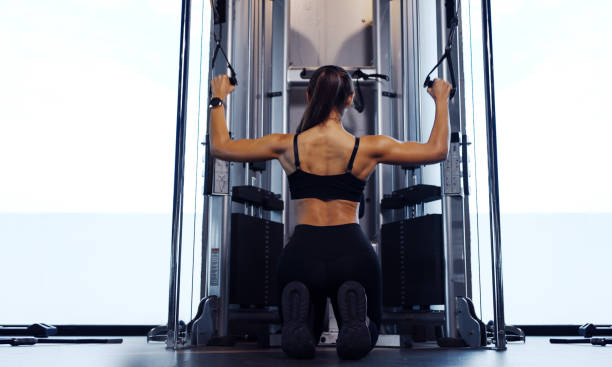
FAQ
1. What are some effective cable shoulder workout exercises?
Some effective cable shoulder workout exercises include cable overhead press, single arm cable shoulder press, cable rear delt fly, cable lateral raise, and cable front raise.
2. How can I target my side delts using a cable machine?
To target your side delts using a cable machine, perform exercises like cable lateral raises, cable side delt raises, and cable reverse flys.
3. What are some cable machine shoulder exercises to build muscle?
Cable machine shoulder exercises such as cable overhead press, cable lateral raises, cable front raises, and cable rear delt flys can help build muscle in the shoulders.
4. How do I perform cable exercises for the rear delts?
To perform cable exercises for the rear delts, stand facing the cable machine, grab the handles or ropes with your hands, and pull the rope or handles towards your chest while keeping your arms straight.
5. What is one of the best cable exercises for the shoulders?
One of the best cable exercises for the shoulders is the cable lateral raise, which targets the side delts effectively.
6. How can I shape my delts using a cable stack?
You can shape your delts using a cable stack by performing exercises like cable lateral raises, cable front raises, and cable rear delt flys.
7. What is the recommended position for performing cable shoulder exercises?
The recommended position for performing cable shoulder exercises is standing facing the cable machine, with the cable pulley set at shoulder level.
8. How do I perform cable rear delt flys?
To perform cable rear delt flys, stand facing away from the cable machine, grab the handles or ropes with your hands, and pull the handles or ropes out to the sides while squeezing your shoulder blades together.
9. What are some exercises for the front delt similar to cable exercises?
Some exercises for the front delt similar to cable exercises include dumbbell shoulder press, barbell shoulder press, and machine shoulder press.
10. How do I position the cable for performing shoulder exercises like lateral raises?
Position the cable at shoulder height and stand facing the cable machine to perform shoulder exercises like lateral raises effectively.

My Experience Building Shoulders With Cables
I'll be honest - when I first started lifting, I barely used cables. Like most beginners, I stuck to "traditional" cable exercises like the bench press and compound exercises with barbells and dumbbells. I wrongly assumed cables were just for pretty isolation moves.
But when I hit a plateau building my shoulders with overhead presses, I decided to shake things up and give cables a real chance. And I'm glad I did!
The versatility of cable stations became apparent quickly. I was able to easily switch from forward to lateral raises by simply moving the pulley height and my body position relative to the cable machine. This allowed me to blast my shoulders from new angles.
And I was amazed at how cables let me target specific exercises to strengthen neglected parts of my shoulders. My rear delts were woefully underdeveloped from years focusing on heavy front delt presses. But cable reverse flyes and face pulls let me isolate them for serious growth.
I did have to drop my ego a bit when stepping away from the "heavy" free weight shoulder press machine. But I was humbled when I struggled to complete lateral raises with just 20 lbs! Cables revealed I had shoulder dysfunction - my left side was much weaker.
So I tailored my workouts to fix this imbalance. Single arm cable shoulder presses strengthened each side independently. And I targeted extra volume on my lagging side with exercises like the cable lateral raise.
Soon my shoulders were growing faster than ever. The excellent cable machines became a secret weapon for building rounder, fuller delts!
I still incorporate free weights into my serious shoulder workout routine of course. But cables provide flexibility to hone in on specific exercises as needed. Whether you have shoulder impingement, want to fix muscle imbalances, or build up lagging parts of your shoulders, cables are a versatile tool that can target many exercises and produce incredible results.
Give cables a dedicated role in your training if you haven’t already. I'm certain you’ll be as impressed as I was with their shoulder-sculpting abilities!
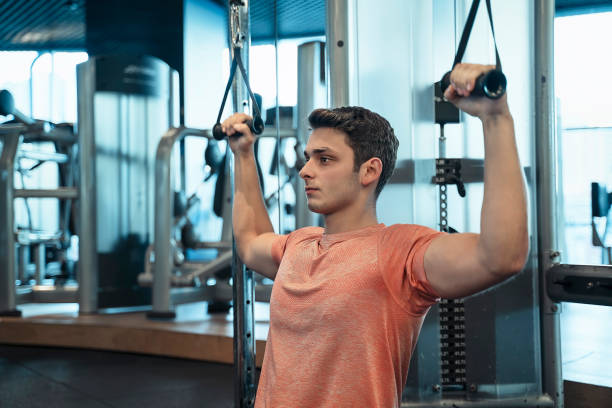
References
Baritello, Omar, et al. “Neuromuscular shoulder activity during exercises with different combinations of stable and unstable weight mass.” BMC Sports Science, Medicine and Rehabilitation, vol. 12, no. 21, 20201.
This study discusses how resistance exercises combined with different forms of instability can elicit functional adaptations and reduce the risk of injury.
The study hypothesized that a combined condition of weight with an unstable weight mass would elicit greater activation due to the increased stabilization demand.
Vetter, Sebastian, et al. “Effect of isokinetic eccentric training on the human shoulder strength, flexibility, and muscle architecture in physically active men: A preliminary study.” PLOS ONE, 20232.
This study emphasizes the importance of strengthening the rotator cuff muscles for injury prevention and rehabilitation.
The study found that eccentric isokinetic training has a significant positive effect on the shoulder.
For More Training Advice + Diet and Lifestyle visit us RIPL Fitness
PS: Make sure you check out the rest of our Shoulders Training Guides:
Supraspinatus Stretch: Your Supraspinatus Muscle & Rotator Cuff
8 Best Compound Shoulder Exercises
Around the World Shoulder Exercises + Workout
5 Frozen Shoulder Exercises For Pain Relief
10 Best trx shoulder exercises | TRX Suspension Training
Shoulder Calisthenics Workout | Bodyweight Shoulder Workout
10 Best Shoulder Dislocation Rehab Exercises
8 Best Shoulder Bursitis Exercises
Shoulder Impingement Exercises For Shoulder Impingement Syndrome
The 10 Best Cable Shoulder Workouts & Cable Shoulder Exercises

